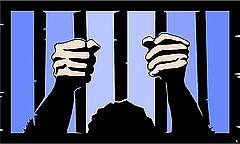Health Care Behind Bars: Virginia's Hidden Medical Crisis

The plight of prisoners in California has received extensive coverage since a class action lawsuit alleged terrible medical care behind bars violated the eighth amendment to the U.S. Constitution.
In Virginia, however, there has been little reporting on the quality of health care for about 31,000 people in state prisons. Recently, the Legal Aid Justice Center in Charlottesville and the Washington Lawyers’ Committee for Civil Rights and Urban Affairs filed suit, claiming women at the Fluvanna Correctional Center near Charlottesville receive substandard care. Inmates say they must wait in an outdoor “pill line” between 3 a.m. and 4 a.m. to receive prescription drugs, regardless of weather conditions, and pay to see a nurse. The suit also claims prisoners are rarely sent to the University of Virginia Medical Center, just a few miles away, even if they have serious problems.
Critics say Fluvanna contracts for medical services with a for-profit organization that benefits financially by providing inexpensive care to the 1,200 women housed there.
Hundreds of formal complaints have been filed at this prison alone, yet news coverage of the situation at Fluvanna and at 36 other state prisons has been minimal.
As a 2013 National Health Journalism Fellow, I will produce a series of reports to be broadcast by public radio stations statewide. Part one will look at the unique medical problems of people living in confinement, with limited dietary options and opportunities for exercise, minimal exposure to sunlight, maximal exposure to infectious disease, stress, and often mental illness. Because the state bars recording in its prisons, it will not be possible to interview current inmates. I will, instead, rely on interviews with four groups to tell this story: former inmates, attorneys representing people currently incarcerated, family members whose loved ones have died or been harmed by poor medical care and medical professionals who have worked in state prisons.
Part two will explore the costs of providing healthcare to inmates. With HIV and hepatitis C fairly common behind bars, the bill to care for a single inmate could easily reach $30,000 per year. We’ll find out how much Virginia saves by hiring outside companies to administer care to prisoners, and whether the profit motive interferes with provision of quality care. We’ll also look at state prisons that provide their own care to inmates, and ask: “Is it better than what is provided by for-profit contractors?”
In part three we’ll examine how the state treats mental illness in prisons, an important question when you realize that mental problems are often at the root of crime. Frequently, when people begin serving a prison sentence, they are taking prescription drugs to control a mental illness, but one study suggests nearly 25% stop taking their medications when they enter prison. We’ll also pose the question: If Virginia fails to address mental illness when prisoners are behind bars, will they be able to live healthy, crime-free lives on release? If society is concerned about public safety, shouldn’t mental health care in prisons be a priority?
Part four will focus on the future – the special challenges Virginia prisons will face as a large number of inmates – many given long sentences without the possibility of parole – begin to experience chronic illness and dementia, common in the senior population. Already, about a third of the population is over 50. Is the state ready to meet the special needs of these older prisoners? How will that be possible, given limited funds? One study estimates the costs to care for an elderly inmate are nine times higher than what is spent on medical care for younger prisoners.
All stories will also appear on the Virginia Public Radio website.
Image courtesy of Vectorportal.com
